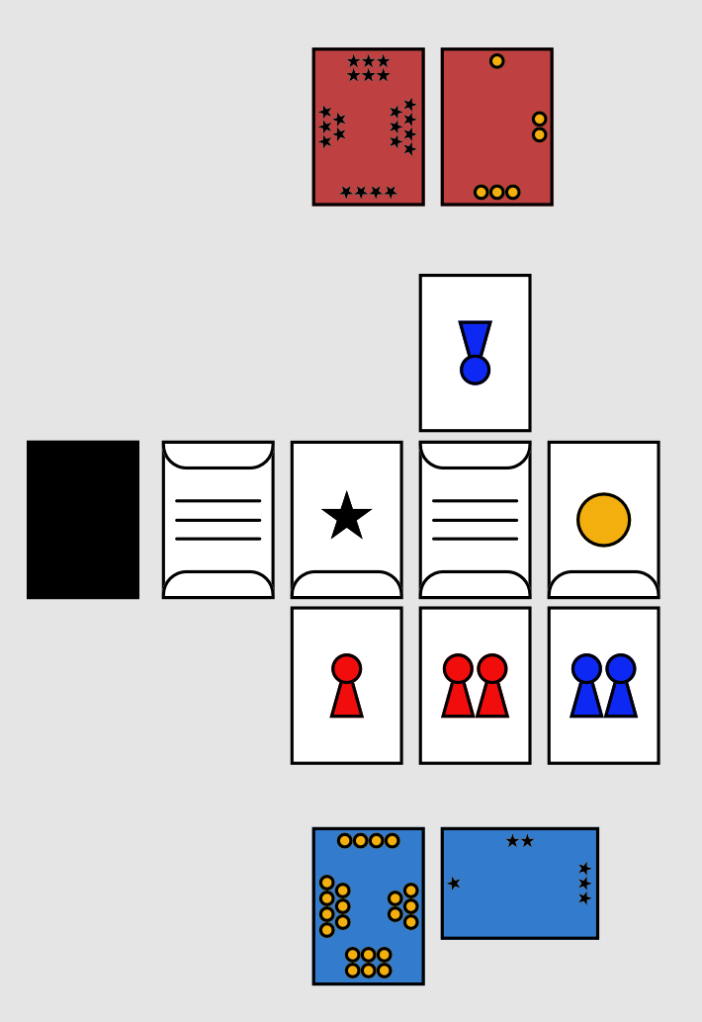
At long last, let’s talk about Cortiça! What is it, and where did it come from?
After Blight Chronicles: Agent Decker wrapped up, I was done. It was such a negative experience that it left me incapable of working on my own projects for a while. It taught me what a panic attack was, even if I didn’t have a name for it yet. Every so often I’d come up with an idea for a mechanism or a theme that seemed interesting and would write them down, but as soon as I started to develop it into a prototype, there would be instant splitting headaches and my heart rate would go up. The message was clear, I had to take a break. This was supposed to be a hobby. This was supposed to be fun.
This went on for a few years.
It had been almost eight years since me and my partner moved abroad for work. I wouldn’t describe myself as a patriotic person, but as time went on I started to miss facets of Portuguese culture that couldn’t be found anywhere else. It was heartwarming to see new, popular boardgames using Portuguese themes but they seemed to focus on just a few aspects of the culture such as wine and azulejo tiles. There’s so much more! One day I brought this up on Twitter and a random user responded with an angry version of “If you’d like to see more games with Portuguese themes, why don’t you make one?”. I think they were just trying to shut me up, but I wanted to make something to answer back. Is it wrong to make a game out of spite?
In June 2020, Button Shy Games announced a new design contest: “Create an 18 card worker placement game. Cards only.“. This seemed impossible! Worker placement games usually have plenty of tokens for workers, currency, resources, sometimes even victory points! How can you compress it all into only 18 cards? It got my brain going. I still wanted to take things easy so I didn’t commit to the contest right away, but I had to see if I could crack this puzzle.
Boardgame designers often get asked “Do you start with the theme or the mechanics?”. In this case the component constraint was just as important. If it can’t fit those cards, it’s no good. So I started to do research on worker placement games. I had to get to the essence of what makes them work, because there wouldn’t be room for much more. Action drafting, timing, blocking, action resolution, collecting and converting resources, multiple paths to victory. In 18 cards…!
This needed a new approach. I figured one way to make sure the game would fit into 18 cards was to sketch what it could look like while in play. This really helped! I still didn’t know what the game was about or how it played, but this let me allocate cards for different functionalities to see how many I would need for a basic worker placement game. After multiple attempts on paper I moved to the computer and sketched something that started to look like a game:
There is a central row of action cards with one or two slots where you can place workers. Each player has their own worker and resource cards, in their color. Workers are double-sided so they could be upgraded. Resources are counted by rotating the card. The amount on the top edge is your current total and they’re double-sided, so each card can count up to seven. And the best part is, I have five spare cards!
Now that I had an idea of the general shape and limits of the game, I could start to figure out what it is about, and how it plays.
If you don’t want to miss a post, you can subscribe to get them via e-mail:

2 thoughts on “Cortiça Part 1 – Origins”